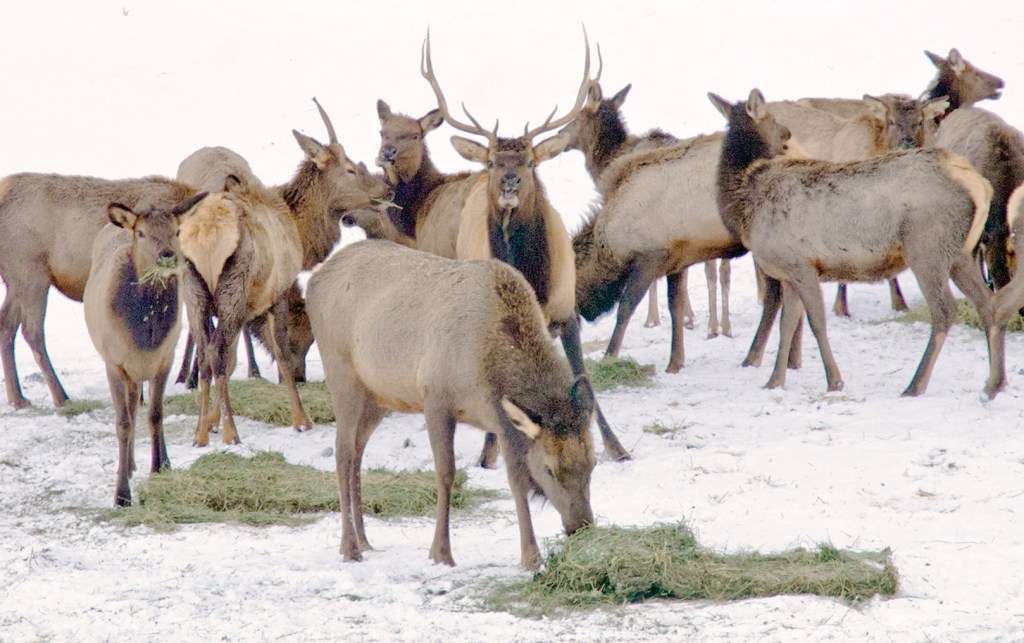Baker, Union county feed sites ready for onslaught of elk
Published 3:00 am Friday, November 25, 2022

- Rocky Mountain elk at a state-operated winter feeding site.
The feast for elk was laid on in time for Thanksgiving, but the elk pay no heed to holidays.
Trending
They know when December begins, however.
At least the elk that Dan Marvin deals with recognize the arrival of the last month of the year.
Marvin manages the Elkhorn Wildlife Area. It’s a series of 10 winter elk-feeding stations, ranging from Old Auburn Lane southwest of Baker City to Shaw Mountain in Union County, operated by the Oregon Department of Fish and Wildlife (ODFW).
Trending
ODFW started the wildlife area in 1971. Its purpose isn’t what it might seem to be, though.
The state agency started setting out alfalfa hay for elk not to stave off starvation during the long Northeastern Oregon winters.
Elk, as a general rule, can withstand all but the worst winters.
ODFW’s goal was to prevent the animals from gobbling the hay that ranchers put up to feed their cattle.
The challenge is that unlike some parts of the state, there is little of what amounts to a buffer zone of winter range, a place between the mountains and the valleys where elk can congregate and get enough to eat without plundering ranches.
ODFW in effect created that zone with the feeding sites.
The idea, which has been largely effective over the past half century, is to entice the elk with alfalfa while they’re migrating from their summer range in the mountains.
Once the elk become accustomed to getting an easy meal, they tend to return to the same spots every year.
Some elk still bypass the feeding sites at times, but they take a much smaller toll than they otherwise would.
Marvin’s hay ledger proves the point.
Each year he lays in a supply of about 1,100 tons — the capacity of the barns at the feeding sites.
“We like to start winter with full barns,” said Marvin, who is starting his fifth winter as the Elkhorn Wildlife Area manager.
ODFW buys that hay from local ranchers.
“We have some established vendors in the valley we work with,” Marvin said. “We pay market price.”
The feed sites are closed to the public from Dec. 1 through April 10.
Because there are elk hunting seasons going on through November (and even later, in some places), elk tend to be moving around a lot until Dec. 1, Marvin said.
But once that day arrives, and the hunting pressure eases, the elk are all but certain to start strolling into the feed sites, where the hay will be ready.
“They know the time frame,” he said.
In years when snow comes early — 2020 was an example, with a couple feet of snow accumulating in the mountains the first half of November — elk will wander into some of the feed sites before Dec. 1.
This year, though, with heavy snow in late October and early November but almost none since, Marvin said the elk have stayed away.
The elk that congregate at the Anthony Creek feed site, near the wildlife area headquarters west of North Powder, tend to be the most consistent when it comes to the Dec. 1 arrival, Marvin said.
Elk that migrate to the other feeding sites, by contrast, often don’t show up in large numbers until snow begins to pile up.
During mid-winter, the Wildlife Area crew feeds more than 1,000 elk, including about 500 at the Old Auburn Lane site and 250 or so at Anthony Creek.
A few of the feed sites also attract deer.
The Auburn and Anthony Creek sites are the two publicly accessible properties with maintained roads where people can park and watch the big herds of elk, which usually include multiple mature, branch-antlered bulls.
To get to the Auburn site, drive south of Baker City on Highway 7 for about seven miles, and turn right on Old Auburn Lane. Follow this gravel road (maintained in winter) for about 3.5 miles where a sign marks the Wildlife Area. The elk are fed on a knoll south of the road.
In 2021 the wildlife area crew pruned many of the ponderosa pine trees near the road, improving the view to the feeding site, Marvin said.
To reach the Anthony Creek site, from North Powder drive west on River Lane for about 8.5 miles. The elk are fed in a meadow south of the road. You can also reach River Lane via Haines and the Anthony Lakes Highway.









